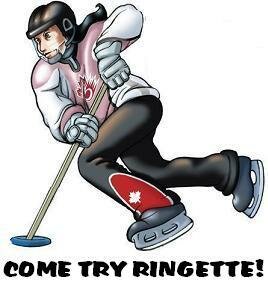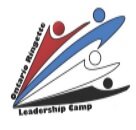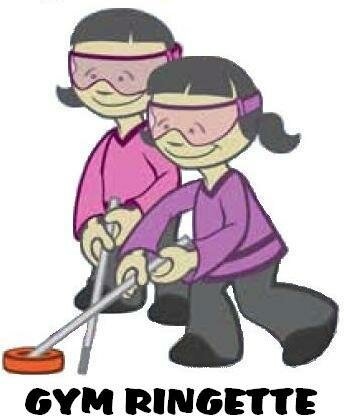
- Ontario Ringette Long Term Athlete Development Brochure
- Ringette Canada Online Fundamental Skills Videos
- Basic Stance
- Ring Handling
- Passing
- Receiving
- Checking
- Shooting
- Dekes and Fakes
- Ringette Canada Technical Skills Matrix
- ORA AGM – LTAD Questions and Answers
- Long Term Athlete Development Overview
- LTAD Powerpoint
- ORA Membership Notice – Names Of Age Categories
- Ringette Canada Brochure
- Ringette Canada 2007 AGM Presentation
Ringette ABC will focus on acquisition and development of the following skills:
- Skating
- Passing
- Receiving
- Shooting
- General knowledge
All documents are available FREE for download .
Please click here access the download page.
- Ringette Canada’s LTAD Website
- CS4L – Canadian Sport For Life
- CS4L – Summer E-News
U6
- Focus on FUN!
- 100% development
- Teams selected vertically
- 2 or more coaches on the ice at all times
- No scores posted
- No positional play
- Emphasis on skating skills, introduction of basic ring skills
- Two minute buzzer may be utilized to introduce line changes within the modified games
- One year-end event with modified games per player, example three games on the ice at once, identical participation awards, off-ice activities – where numbers require, U6 Learn to Skate players may also each participate in one year-end event with a team from an older division
U7
- Focus on FUN!
- 100% development
- Teams selected vertically
- 2 or more coaches on the ice at all times
- No scores posted
- No positional play – any line changes would see 6 new players on the ice, one of whom would be the “goalie,” and would therefore be permitted in the crease, no goalie equipment will be worn
- Emphasis on skating skills, introduction of basic ring skills
- Two minute buzzer may be utilized to introduce line changes within the modified games
- A maximum of 2 events per year, per player, including any year end “Bunny-fest” – May play modified games, for example half-ice, any awards will be identical participation awards for each participant, events may also include off-ice activities
U8
- Focus on FUN!
- 100% development – Team Activity logs must be maintained and submitted to Regional Sport Development Coordinator at the end of the season – Scrimmages against other teams are considered development because they introduce the game format to new players without the added pressure of score-keeping
- Teams selected vertically using the Skills Matrix – Team must complete evaluations based on the Skills Matrix. The first set of evaluations must take place between September 1st and October 20th with results being sent to the Regional Sport Development Coordinator by October 20th. The second set is optional, evaluations should take place between January 1st and March 31st with results being sent to the Regional Sport Development Coordinator by March 31st.
- The Team Composite Score based on the Skills Matrix Evaluations MUST be on the TRF in order for the team to be accepted into any tournament.
- 1 or more coaches on the ice at all times
- No scores posted
- Start learning positional play, switching positions throughout the year
- Goaltenders should be dressed in full gear. All players must rotate through the position at least once. Teams are encouraged to dress two goalies per game
- Emphasis on skating skills, developing specific ring skills
- Two minute buzzer should be utilized to introduce line changes within the scrimmages
- May play full-ice scrimmages with basic ringette rules observed (blue lines, creases, etc), with a qualified official on the ice (explains calls to athletes – officials at U8 should speak with both teams’ coaches before the scrimmage in order to confirm the expectation of calls to be made. There should be a progression throughout the season, with more rules being observed as the players grow more confident with their game-play)
- A maximum of 3 events per year, per player, including any year-end event – events may have off-ice activities, and any awards will be identical participation awards for each participant
U9
- Focus on FUN!
- 70% development, 30% competition – Team activity logs must be maintained and submitted to Regional Sport Development Coordinator at the end of the season
- Teams selected vertically using the Skills Matrix – Team must complete evaluations based on the Skills Matrix. The first set of evaluations must take place between September 1st and October 20th with results being sent to the Regional Sport Development Coordinator by October 20th. The second set is optional, evaluations should take place between January 1st and March 31st with results being sent to the Regional Sport Development Coordinator by March 31st.
- The Team Composite Score based on the Skills Matrix Evaluations MUST be on the TRF in order for the team to be accepted into any tournament.
- Introduction of game-play
- Scores may be kept
- Positional play is introduced (including goal-tenders) – all athletes must rotate through all positions
- Qualified officials on the ice for competitions
- A maximum of 4 events per year, including year end – standard ORA sanctioned event rules apply
U10
- Focus on FUN!
- 70% development, 30% competition – Team activity logs must be maintained and submitted to Regional Sport Development Coordinator at the end of the season
- Teams selected vertically using the Skills Matrix – Team must complete evaluations based on the Skills Matrix. The first set of evaluations must take place between September 1st and October 20th with results being sent to the Regional Sport Development Coordinator by October 20th. The second set is optional, evaluations should take place between January 1st and March 31st with results being sent to the Regional Sport Development Coordinator by March 31st.
- The Team Composite Score based on the Skills Matrix Evaluations MUST be on the TRF in order for the team to be accepted into any tournament.
- Introduction of game-play
- Scores may be kept
- Positional Play – starting to play in set positions – RECOMMENDATION should rotate 4-5 athletes through goaltender position.
- Qualified officials on the ice for competitions
- A maximum of 4 events per year, including year end – standard ORA sanctioned event rules apply
U12
- Focus on FUN!
- 70% development, 30% competition – Team activity logs must be maintained and submitted to Regional Sport Development Coordinator at the end of the season
- The U12 division will have a Provincial component and a Regional component. Teams in the Regional component will be vertically sorted and balanced based on the skills matrix. The Provincial component will introduce a competitive element with teams selected horizontally with the highest-skilled players playing on the highest-level team in the association, and so on until all Provincial level teams have been selected
- The Team Composite Score based on the Skills Matrix Evaluations MUST be on the TRF in order for the team to be accepted into any tournament.
- A maximum of 5 events per year, including either Regionals or the U12 Petite Provincial Event
- Positional Play – starting to play in set positions – RECOMMENDATION FOR U12 REGIONAL TEAMS – should rotate 4-5 athletes through goal-tender position
U14
- 60% development, 40% competition – Team activity logs must be maintained and submitted to Regional Sport Development Coordinator at the end of the season
- Teams selected horizontally with the highest-skilled players playing on the highest-level team in the association, and so on until all teams have been selected.
U16
- 60% development, 40% competition – Team activity logs must be maintained and submitted to Regional Sport Development Coordinator at the end of the season
- Teams selected horizontally with the highest-skilled players playing on the highest-level team in the association, and so on until all teams have been selected
U19
- 40% development, 60% competition – Team activity logs must be maintained and submitted to Regional Sport Development Coordinator at the end of the season
- Teams selected horizontally with the highest-skilled players playing on the highest-level team in the association, and so on until all teams have been selected
18+
- 25% development, 75% competition
- Teams selected horizontally with the highest-skilled players playing on the highest-level team in the association, and so on until all teams have been selected
What Is The Skills Matrix?
The Skills Matrix is a set of evaluations that allows coaches and associations to identify areas of strength and skill development for individual athletes, teams, and associations for age divisions
U12 (Provincial and Regional), U10, U9, and U8.
Why do I need to do this??
The Skills Matrix Evaluations allow:
- Athletes to be appropriately placed on teams where they can develop collaboratively under the direction of coaches
- Coaches to target areas of skill development in order to increase the proficiency of their athletes
- Associations to develop on-ice programming to address wide-spread areas of improvement (e.g., power-skating, passing and/or shooting clinics, etc.)
- Regions and Leagues to ensure the appropriate placement of athletes on teams and teams in loops or tournament groups
What is the Sport Development Committee doing to improve this process?
We are a group of experienced and dedicated members of the ringette community including athletes, coaches, officials, parents, and association volunteers. We are committed to implementing the Sport for Life philosophy, which includes the LTAD principals, to the benefit of all athletes in Ontario.
We are working to improve by:
- Allowing players to develop in all facets of the sport through evaluation and development of all necessary skills
- Providing coaches with concrete feedback and the tools to help their athletes grow and develop in the sport (e.g., the Drills for Skills packages available at: Coaching – Resources Tab)
- Improving consistency of evaluations across regions and the province by:
- Ensuring a standard on-ice evaluation outline to be implemented in each association in the province
- Making the Skills Matrix videos available in order to base all evaluations on the same standards (http://www.youtube.com/channel/UCWGddPSY6p6_X8wQqe1csPw)
- Providing support and resources to evaluators (from your Sport Development Coordinators)
What does each association need to do?
Ensure that every player in the U12, U10, U9, and U8 age groups in Ontario are evaluated using the attached Skills Matrix. There are four stages and progressions of skill development. Understanding the stages of skill development is necessary for coaches and parents to ensure an athlete acquires skills in the proper order. The following terms used in the Skills Matrix explain the stages of skill development that a Ringette player will progress through when learning technical skills. The Skills Matrix uses a grading system numbered 1 to 4.
1 Initiation -First contact with the skill Training Emphasis: Basic stances and positions. Getting the idea of what the movements are about and look like.
2 Acquisition -The athlete can coordinate and execute key components in the correct order. -Timing of the skill lacks synchronism, rhythm, and flow. -The athlete needs to think about what they are doing during the execution of the skill. Training Emphasis: Global Execution and general form of movement.
3 Consolidation -Performance is inconsistent but movement is starting to show coordination. -Skill is performed with rhythm under stable conditions. -Some elements of performance are maintained (when the athlete is under pressure, conditions change or demands increase). Training Emphasis: Maintaining the form and movements and some performance consistency under a variety of conditions under stress.
4 Refinement -Performance is very consistent and precision is high in demanding conditions. -Movements are automated with only minor fine-tuning necessary. -Critical reflection and correction is possible by the athlete. Training Emphasis: Creating conditions that stress the specific elements that need adjustments.
Each association with teams participating in the above age groups will be required to conduct an evaluation for each player using the skills matrix. The evaluations will then be used in the formation of teams. In the event an association is going to ice two or more teams in the U9/U10 division, the players must first be divided by age to determine if there are a sufficient number of players registered to meet the Viable Team Guidelines, as set out in the ORA Operating Manual. If there is an insufficient number of players in one age group, the player evaluations must be used to form a combined team based on the following ranking formula, regardless of the age.
Skills Matrix Video

Check out the Ontario Ringette YouTube page to access the Skills Matrix Videos created to assist in the Skills Matrix process.
Skills Matrix Templates
- U8 Template
- U8 Template with composite score calculations
- U9 Template
- U9 Template with composite score calculations
- U12 Template
- U12 Template with composite score calculations
How To Run Skills Matrix Evaluations for 2015/2016 Season
- Skill Matrix Tip Sheet
- Player Evaluation Outline
- Example Template
Team Activity Log
The Team Activity Log is a tool that will assist coaches in tracking their on-going Competition/ Development RATIOS.
We recognize the challenge of ice time within your association and the worries of meeting objectives when so much is not in control of the coach. During the 2009/2010 season the Sport Development Committee (formerly known as Athlete Development) reviewed the practice to game ratios used within the associations and we believe that the ratios listed below are easily achievable.
Use the Team Activity Log to track your team’s Competition/Development Ratios throughout the season.
U7 & U8
Although there is no suggested practice/game ratio at this level, the majority of the time will be spent on practices. For this reason we have chosen a training/game ratio of 100/0. 100 percent development periods versus 0 percent competition sessions. The focus for the U7 & U8 level will continue to be having FUN and becoming comfortable on the ice using simple group skating games and activities. Develop basic skating skills such as basic stance, falling and getting up, edges, balance on skates, start, stop, walking all directions, forward/backward stride and glide. Introduce sticks and rings, playing fun games to learn how to send, receive and carry a ring. If associations want to schedule exhibition games they may do so with any association within the province…no official schedule will be issued. If needed coaches can be on ice to assist players with the development of the sport. LTAD also supports the need for officials to officiate this level as this allows our young officials to utilize their skills and train for the higher levels of play.
U9 & U10:
A training/game ratio of 70/30. 70 percent development periods versus 30 percent competition sessions.
U12:
A training/game ratio of 70/30. 70 percent development periods versus 30 percent competition sessions.
U14: A training/game ratio of 60/40. 60 percent development periods versus 40 percent competition sessions.
U16: A training/game ratio of 60/40. 60 percent development periods versus 40 percent competition sessions.
U19:
A training/game ratio of 40/60. 40 percent development periods versus 60 percent competition sessions.
18+:
A training/game ratio of 25/75. 25 percent development periods versus 75 percent competition sessions.













